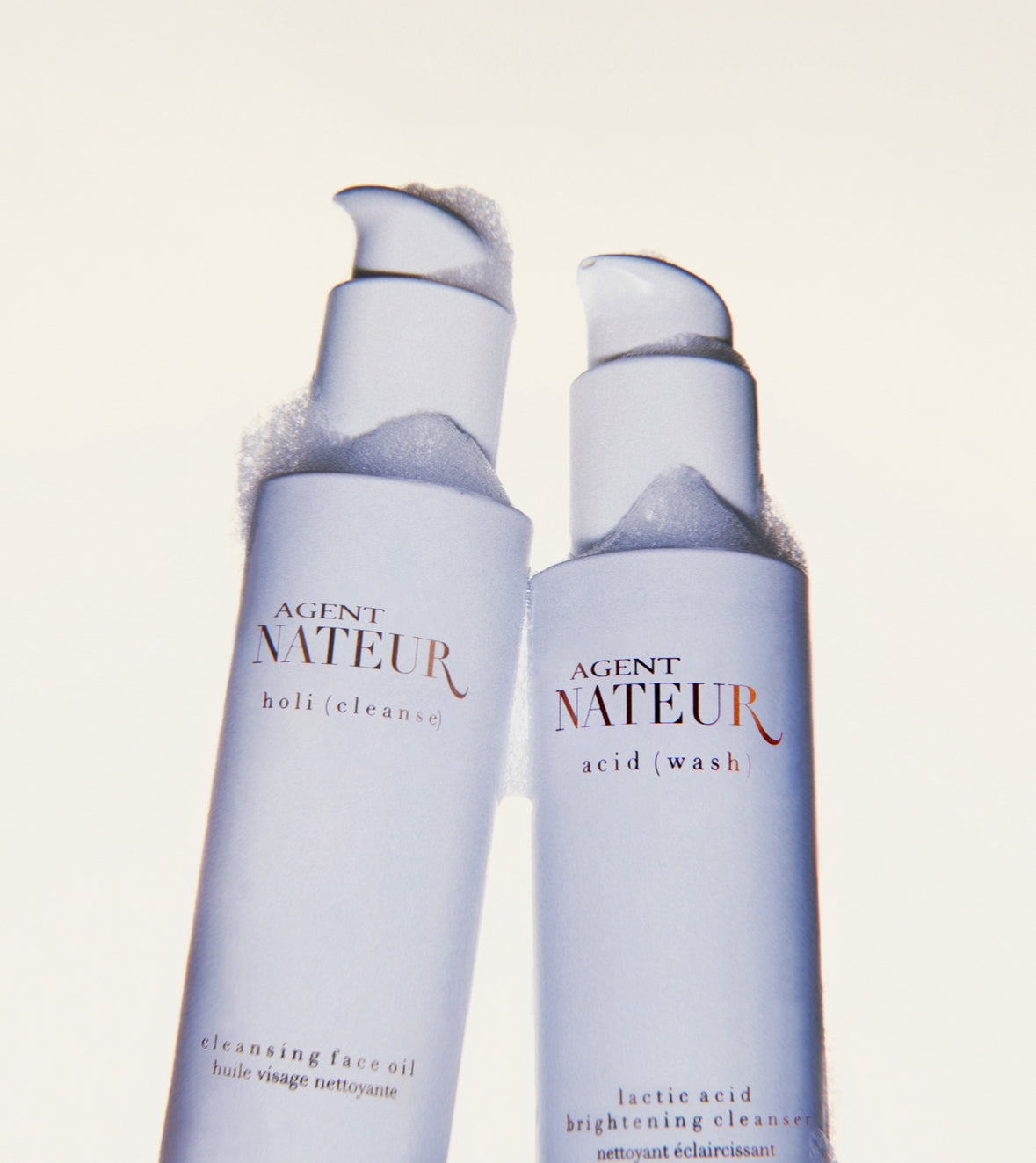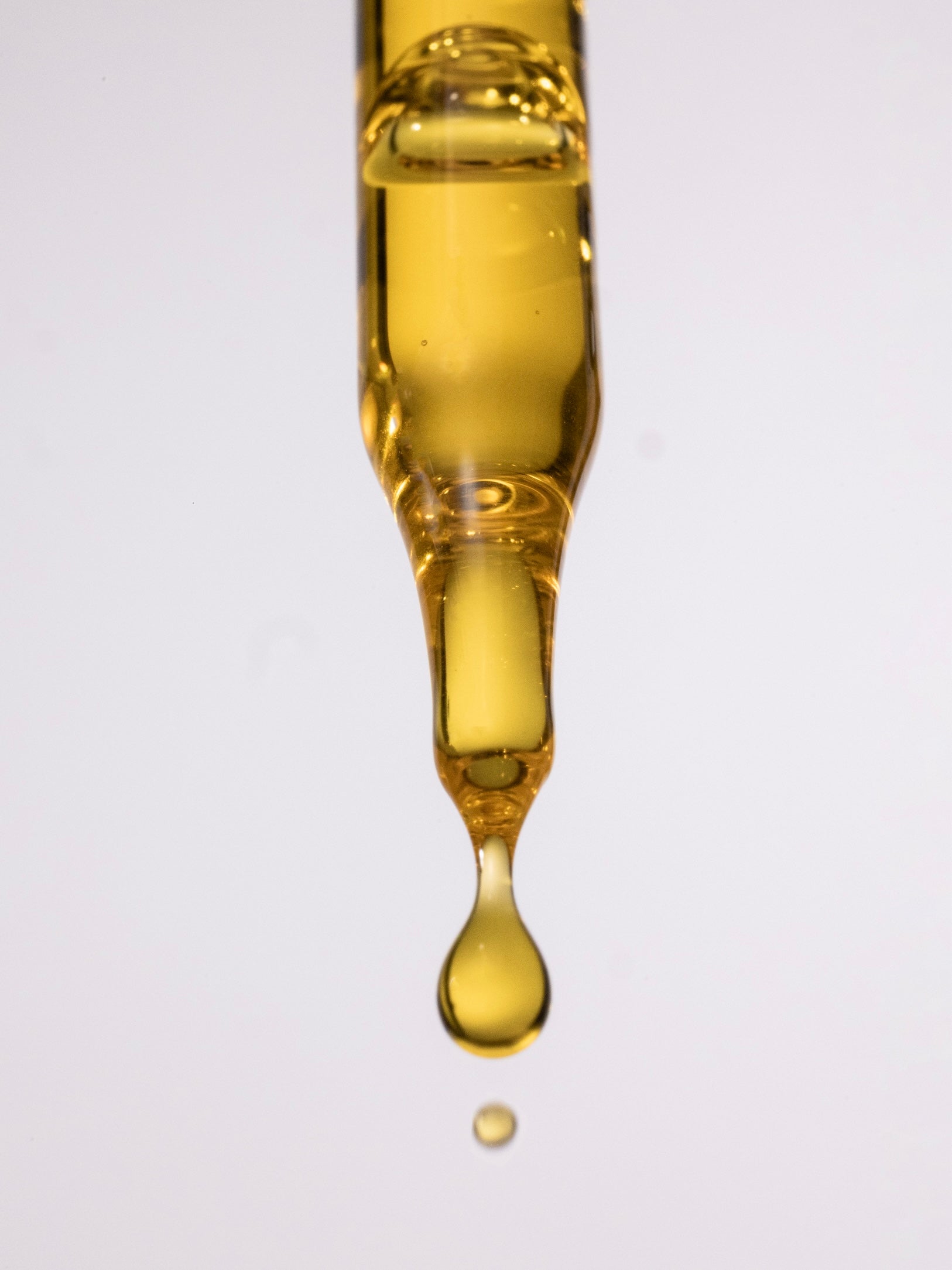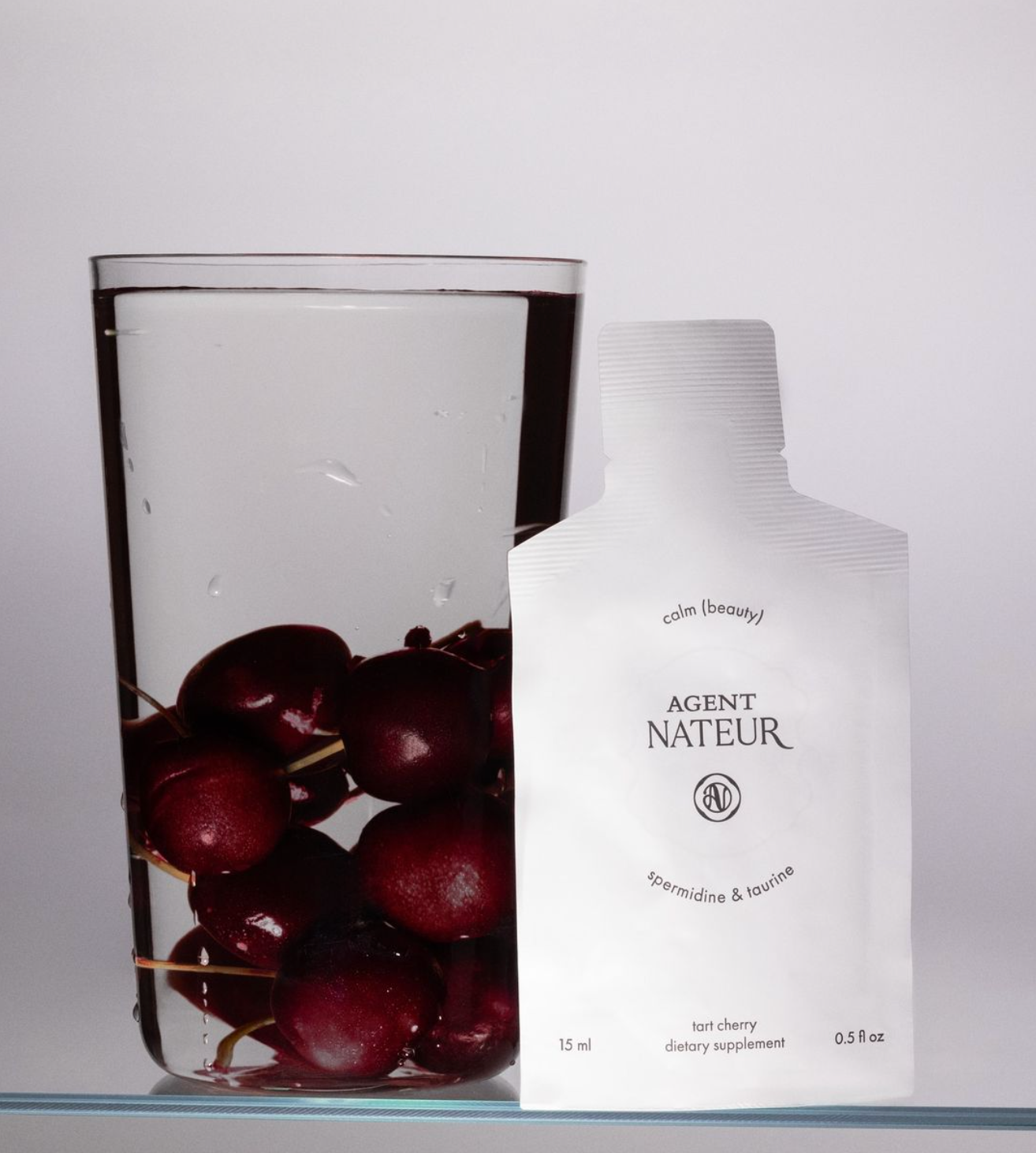Lactic Vs Glycolic Acid

Exfoliation and proper hydration are key in any skincare regimen. In fact, they are the two most important steps in your skincare routine, if you’re looking to achieve a bright, glowing complexion and super smooth skin texture.
As old skin cells accumulate on the skin’s surface, it can leave the skin looking dull and its texture looking dry and rough. Removing the barrier of dead skin cells through exfoliation, reveals a fresh new layer of skin, allowing moisturizer to penetrate more deeply and leaving skin looking fresh and healthy.
When it comes to exfoliators, there are two types, manual and chemical. Manual exfoliators require scrubbing with abrasive materials; while chemical exfoliators, use an acid or enzyme to dissolve or loosen the bonds that hold dead cells on the skin's surface.
You’ve probably heard of AHA’s and BHA’s. AHA’s or alpha hydroxy acids, such a glycolic acid and lactic acid, are water soluble acids that work only on the skin’s surface. BHA’s or beta hydroxy acids such as salicylic acid, are oil soluble acids that work on the surface as well as deep inside the pores. While each acid has its own set benefits, there is one acid that stands out from the rest and that is lactic acid. Lactic acid, which can be found in fermented foods, is the most gentle of all the acids. While other powerful acids, such as glycolic acid and salicylic acid, can work wonders on the skin, they do have drawbacks. Both glycolic and salicylic acids can be irritating and thin the skin barrier. Overuse of glycolic acid can even break down collagen over time.
While lactic acid is less potent, it still delivers incredible results. It also provides something the other acids do not and that is hydration. While the other acids can cause dryness and irritation, lactic acid actually increases moisture levels in the skin. This is because lactic acid’s unique structure allows it to bind water with the skin.
Lactic acid’s benefits go far beyond just exfoliating and moisturizing. It’s a true multitasking ingredient that works on multiple levels at once. Unlike other acids, which can weaken the skin barrier, lactic acid actually strengthens it by encouraging it to make more ceramides. Ceramides are lipids found in naturally high concentrations in the very top layers of the skin. They make up over 50% of the skin’s structure and form a protective layer to prevent moisture loss. They also protect the skin from pollution and other environmental stressors. Lactic acid also aids in strengthening the skin by stimulating collagen production.
So what kind of results can you expect to see with regular use of lactic acid?
Right away you will probably notice a brighter, more glowing complexion thanks to its exfoliating properties. You will also notice a smoother, softer skin texture. Then gradually over time, you will begin to notice a more even skin tone as hyperpigmentation and sun spots begin to fade due to its skin lightening properties. If you have mature skin, fine lines and wrinkles will smooth out and skin will become firmer and plumper as collagen production is increased.
While lactic acid can be beneficial for almost all skin types, it can be especially helpful for mature, acne prone and sensitive skin. In fact, lactic acid helps with acne as it is known to kill bacteria. It can also help to fade acne marks and reduce scarring.
Lactic acid comes in many forms. You can find it as an exfoliator, serum, mask moisturizer or even as a cleanser. In fact, a lactic acid cleanser is a great way to incorporate lactic acid into your routine if you have sensitive skin.
Our new cleanser, acid (wash), combines lactic acid with lavender floral water, aloe leaf and peony root extract to gently exfoliate, while brightening, refining and reducing the appearance of imperfections. The lavender water’s anti-inflammatory and antiseptic properties transform the skin by calming redness, reducing irritation and minimizing enlarged pores. Aloe leaf’s rich makeup of vitamins, minerals, amino acids and antioxidants nourish the skin, while its hydrating properties plump and moisturize. Peony root extract’s nourishing botanicals, brightens skin tone and increases firmness, while its antioxidants protect against aging.
Tips
For unparalleled results, follow acid (wash) with holi (cleanse) cleansing face oil and the holi (trinity).
Once weekly, for deeper exfoliation and cleansing, apply acid (wash) to clean, dry skin as a mask. Leave for ten minutes, then rinse with warm water to remove.
Lactic acid can make your skin more sensitive to the sun. It’s important to make sure to protect your skin from the sun, even on days you are not using lactic acid. Some studies suggest that sun sensitivity can last up to four weeks after you’ve stopped using lactic acid.





